MaryAnn Bernal's Blog, page 309
March 6, 2014
The Phil Naessens Show: The 2014 New York Yankees: Champions or Busts?
http://phillipnaessens.wordpress.com/2014/03/05/the-2014-new-york-yankees-champions-or-busts/
 On this edition of the Phil Naessens Show Mark Berman joins Phil to discuss the New York Mets winning 90 games this season, Noah Syndergaard, Zack Wheeler, Lucas Duda and more Mets talk. Rush Olson joins Phil to take a closer look at the New York Yankees: they've spent the cash. Will they be champions or busts? Alex Hall joins Phil to discuss who will fill the last available spot on the Oakland Athletics roster and examine whether or not the 2014 Houston Astros will lose more than a 100 games this season plus much more MLB talk.
On this edition of the Phil Naessens Show Mark Berman joins Phil to discuss the New York Mets winning 90 games this season, Noah Syndergaard, Zack Wheeler, Lucas Duda and more Mets talk. Rush Olson joins Phil to take a closer look at the New York Yankees: they've spent the cash. Will they be champions or busts? Alex Hall joins Phil to discuss who will fill the last available spot on the Oakland Athletics roster and examine whether or not the 2014 Houston Astros will lose more than a 100 games this season plus much more MLB talk.
 On this edition of the Phil Naessens Show Mark Berman joins Phil to discuss the New York Mets winning 90 games this season, Noah Syndergaard, Zack Wheeler, Lucas Duda and more Mets talk. Rush Olson joins Phil to take a closer look at the New York Yankees: they've spent the cash. Will they be champions or busts? Alex Hall joins Phil to discuss who will fill the last available spot on the Oakland Athletics roster and examine whether or not the 2014 Houston Astros will lose more than a 100 games this season plus much more MLB talk.
On this edition of the Phil Naessens Show Mark Berman joins Phil to discuss the New York Mets winning 90 games this season, Noah Syndergaard, Zack Wheeler, Lucas Duda and more Mets talk. Rush Olson joins Phil to take a closer look at the New York Yankees: they've spent the cash. Will they be champions or busts? Alex Hall joins Phil to discuss who will fill the last available spot on the Oakland Athletics roster and examine whether or not the 2014 Houston Astros will lose more than a 100 games this season plus much more MLB talk.
Published on March 06, 2014 07:44
History Trivia - The real Cyrano de Bergerac is born
March 6
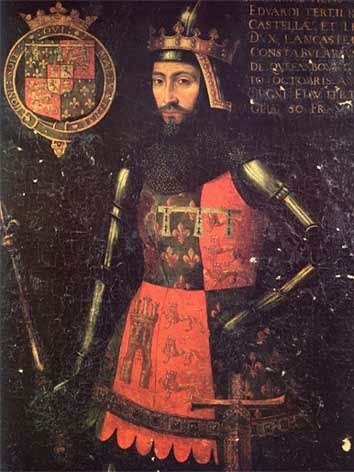
1340 John of Gaunt, 1st Duke of Lancaster was born.

1475 Michelangelo Buonarrotti was born.

1619 Cyrano de Bergerac was born. The real Cyrano was a soldier, duelist, dramatist and satirist, and inspired several romantic legends, the most famous of them Edmund Rostand's play.

1340 John of Gaunt, 1st Duke of Lancaster was born.

1475 Michelangelo Buonarrotti was born.

1619 Cyrano de Bergerac was born. The real Cyrano was a soldier, duelist, dramatist and satirist, and inspired several romantic legends, the most famous of them Edmund Rostand's play.
Published on March 06, 2014 07:43
March 5, 2014
Chinese Jurassic Park yields incredible feathered dino find
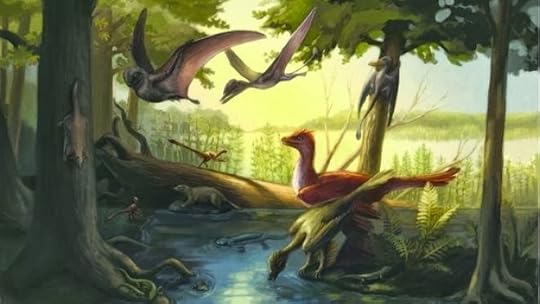 By Tanya LewisPublished March 05, 2014
By Tanya LewisPublished March 05, 2014LiveScience A fossil bed in China that contains some of the world's most exquisitely preserved feathered dinosaurs, early birds, reptiles and mammals may also be home to an equally rich set of older fossils from the Middle Jurassic, a new study finds.
These older fossils, dating back about 160 million years, contain the earliest known gliding mammal earliest swimming mammal, a flying reptile and the earliest feathered dinosaurs. Now, a new study classifies these fossils as belonging to a distinct ecological group, or biota.
The new biota was found in layers of rock beneath the so-called Jehol Biota, a famous collection of 130-million-year-old fossils from China's western Liaoning Province and nearby northeastern China; the Jihol organisms are now thought to have been killed and preserved in a Pompeii-style eruption. In recent years, fossils that are 30 million years older have surfaced from beneath the Jehol Biota, but have not been definitively linked to the same time period. [In Photos: Wacky Fossil Animals from Jurassic China
The fossils from the Jehol Biota literally lie on top of the older specimens, said David Hone, a dinosaur biologist at Queen Mary University of London and leader of the study published yesterday in the Journal of Vertebrate Paleontology.
"They seem to be from the same environments lots of trees and probably a lot of water," Hone told Live Science.
The researchers have catalogued and described the older fossils in unprecedented detail, naming them the Daohugou Biota after a village in Inner Mongolia near one of the six main fossil sites examined. Like the Jehol fossils, the Daohugou fossils have remarkably intact skeletons, often still containing soft tissues and even feathers.
The fossil trove dates from the Middle-Upper Jurassic, a period when birds are thought to have evolved from feathered dinosaurs. The team found feathered dinosaurs that were extremely birdlike, thought not any actual birds.
At the moment when birds and dinosaurs split from each other, as expected, "you can barely tell them apart," Hone said.
They also found mammals that glided from trees ("the Mesozoic equivalent of a flying squirrel"), a classic transitional form of flying reptile called a pterosaur and even a "weird little bucktoothed dinosaur," Hone said.
Hone predicts his colleagues will find a bird in the Daohugou Biota within the next decade. "It has only been in the last two to three years that we've recognized that this is a place we should really be looking," he said.
http://www.foxnews.com/science/2014/0...
Published on March 05, 2014 09:27
Vikings at the British Museum: great ship but where's the story?
 Ghost ship … Roskilde 6, the biggest Viking vessel ever found, ends the British Museum's new exhibition. Photograph: Frantzesco Kangaris for the Guardian The longship at the heart of the British Museum's new Viking exhibition is spectacular – but the rest of the show is a bloodless collection of bowls and brooches
Ghost ship … Roskilde 6, the biggest Viking vessel ever found, ends the British Museum's new exhibition. Photograph: Frantzesco Kangaris for the Guardian The longship at the heart of the British Museum's new Viking exhibition is spectacular – but the rest of the show is a bloodless collection of bowls and broochesJonathan Jones
It cuts through the air like a sword through flesh, relentless. The prow is as sharp as a shark's tooth. A fragile heart of oak survives within the metal skeleton. This ghost ship is solid yet empty, there and not there.
Vikings: Life and Legend British Museum, London WC1Starts 6 MarchUntil 22 JuneDetails:
020-7323 8181Venue website Roskilde 6, the biggest Viking ship ever found, is the lifeblood of the British Museum's exhibition Vikings: Life and Legend. This colossal exhibit – it is 37 metres long in its reconstructed totality, though only about a fifth of the hull is original timber – is spectacular, beautiful, thought-provoking and profound. It embodies not just the nautical ingenuity and martial prowess of the Vikings but their art and beliefs, too.
Around its enigmatic presence are displays that amplify its meanings. A carved, eighth-century "picture stone" from the Swedish isle of Gotland shows such a longship ferrying a dead warrior to Valhalla, the hall of the god Odin, where Vikings who die bravely in battle will feast until they are called to fight in the last battle, Ragnarok.
A phantom Viking ready for that apocalyptic fight glares from a glass case near the warship. He's a surreal composite of metal and bone. His head is a helmet. Under this grins a jaw, with its teeth filed to create a horrific snarl intended to terrify monks. Tattoos would have added to the warrior's scary aspect as he jumped off Roskilde 6 into the surf, screaming and roaring as he rushed onshore to kill and steal and burn.
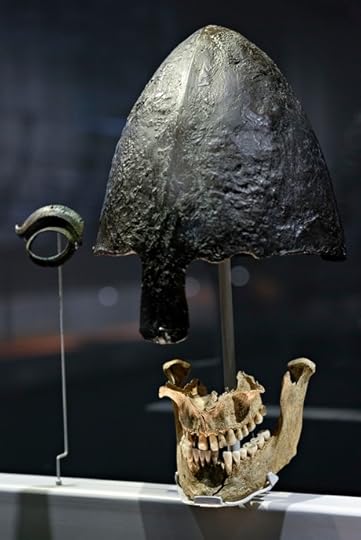 Ready for the apocalypse … a jawbone, helmet and weapons, at Vikings: Life and Legend, British Museum, London. Photograph: Frantzesco Kangaris for the Guardian
Ready for the apocalypse … a jawbone, helmet and weapons, at Vikings: Life and Legend, British Museum, London. Photograph: Frantzesco Kangaris for the Guardian On 8 January 793, men like this in ships like this appeared on the horizon off Northumbria. Monks were illuminating manuscripts and chanting prayers in Lindisfarne monastery. Within hours, records the Anglo-Saxon Chronicle, "the heathen miserably destroyed God's church ..."
Britain was an easy target for the Viking raiders. A straight line westward from southern Norway leads directly to north-east Britain. The same instinct to forge westward led Vikings from Greenland to America, where they fought native Americans. Roskilde 6 reveals something else about their sailing skills: it is wide with a very shallow, flat underside. This design meant Viking ships could easily navigate rivers. They besieged Paris by sailing up the Seine. They created the kingdom of "Rus" – the origin of Russia – by sailing down its rivers until they reached the Black Sea, and even terrorised the eastern imperial city of Byzantium.
It's an incredible story. The Vikings burn in history, unforgettable antiheroes. I just wish this exhibition made a more engaging and humanising job of telling that story. The longship is sublime, the swords and skeletons that surround it are terrifying, but Vikings: Life and Legend is, until you reach these wonders, a pedantic exercise in pure archaeology that fails to shape its subject into a stimulating narrative.
I've started my account of it at the end because that's where it finally comes alive. The huge space where Roskilde 6 glides majestically among swords and skeletons is this show's conclusion, which you reach after a journey so badly staged it left me numb. Are the curators resting on their shields, confident that a real Viking ship is enough of a stunner to float everyone's boat, or do they have more obscure reasons for rendering the Viking world mute, impersonal and even – can this be – boring?
Vikings is the first exhibition in the British Museum's new state-of-the-art gallery. It takes advantage of this huge space to display that ship, no less. But when you enter the show there's no excitement at all. The new gallery is not as charismatic as the museum's old Reading Room, where great shows like The First Emperor (and his terracotta warriors) and Life and Death in Pompeii and Herculaneum were staged. The circular shape of the Reading Room made for magical labyrinthine displays. This place feels, on first sight, more like a big grey box where display cases are laid out in dismal straight lines.
There's no stage-setting. No gory recreation of the Lindisfarne raid, say, to get us in the mood. Instead, cases of smallish, similar objects throw visitors straight into some thorny problems of archaeology. How do Viking artefacts compare with things being made at the same time by Baltic and Slav peoples? One of the first cases offers a chance to find that out.
I felt like crying. Where were the swords? And if I was ready to bawl, what does this exhibition offer its younger visitors? It can't claim not to be for them. You can't put on an exhibition called Vikings without expecting some kids. The only way this exhibition could sound more child-friendly would be if it was called Vikings and Dinosaurs. But the austerely beautiful cases of brooches and golden rings and amber offer very little to fans of Horrible Histories. This is mean, especially as the shop at the end is quite happy to push a lucrative array of Viking toys.
Even the soundtrack to the first displays, a reading of classic Viking literature, is in Old Norse. Instead of opening up this world, as a well-read translation might, it closes it off in melancholy Nordic words. This is perhaps a clue to what the curators think they are doing. They want to estrange our view of the Vikings. Forget those rehashed Norse myths in The Hobbit, forget the song in Horrible Histories where the Vikings are a heavy metal band who are "gonna paint the whole town red tonight – literally ..."
No wait - it's even madder than that. Don't just forget modern images of the Vikings: forget what was written about them in the Anglo-Saxon Chronicle, and forget (or learn to appreciate in Norse) their own great works of literature, which were written down in the middle ages but draw on oral traditions going back to the age of the Viking raids.
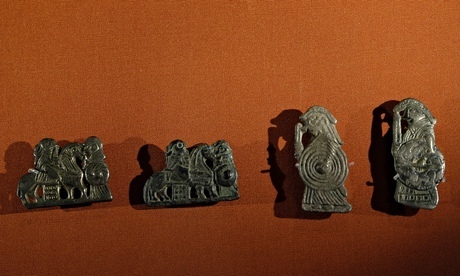
Carvings of valkyries on display at Vikings: Life and Legend, British Museum, London. Photograph: Frantzesco Kangaris for the Guardian
These sagas of the Vikings are full of characters. Just to reel off some nicknames is to get a taste of their vivid humanity: Ragnar Hairy-Breeches, Ivar the Boneless, Eric the Red, Thorstein the Black, Olvir Hump. The Vikings left a legacy of stories in which legend and truth mingle. They'd have told this exhibition as a story.
Why not weave their tales and the histories written by their enemies into the mix of archaeological stuff to give it warmth and context? The refusal to do so cannot be an oversight. It looks like an archaeological dogma: only material objects painstakingly excavated are to be relied upon as evidence. The rest is romantic twaddle, apparently.
For instance, where are the gods? The picture stone showing a ship arriving at Valhalla is one of just a handful of images of mythology in this exhibition. There's more about bowls and bracelets than about Thor.
Maybe I am being too hard on the curators. Perhaps the Vikings are innately difficult to bring to life in an exhibition. Their art is full of atmospheric swirls and crafty detail, but it is not their greatest cultural achievement. They really were better with words. Egil's Saga is the first psychological novel, a portrait of a tortured genius who is at once a poet and a serial killer. Where does Viking visual art attain that complexity?
The art historian Kenneth Clark said the Vikings had a culture, not a civilisation. Their everyday life looks hard, cruel and repetitive in this exhibition. A beautiful ivory flask from Byzantium just seems in another league of sophistication and layered meaning. But when you reach the ship hall you will see that Clark was wrong. The Vikings created something that went beyond any civilisation of their age. The greatest work of art here is the longship. It is a great human image of endeavour and exploration: these were not just killers but intensely curious pathfinders who even colonised the icy wastes of Greenland. A clever Viking called it that, according to the sagas, to make it sound more attractive for settlers.
If you sail these troubled waters, take my advice. Head straight for the longship and the Viking armour. Gaze on Roskilde 6 and let its eerie magic work on you. There is elvish gold here, but to find it you must fight your way past some oddly joyless ogres.
http://www.theguardian.com/artanddesign/2014/mar/04/vikings-british-museum-ship-story
Published on March 05, 2014 09:21
Italy approves €2m repair work for Pompeii after series of collapses
 Culture minister holds emergency meeting with archaeologists after heavy rains cause walls to crumble in ancient city
Culture minister holds emergency meeting with archaeologists after heavy rains cause walls to crumble in ancient cityA collapsed section of the wall of an ancient shop in Pompeii, Italy. Photograph: Salvatore La Porta/AP Citing "utmost urgency," Italy has approved work to repair walls in ancient Pompeii that collapsed after heavy rains, and authorised spending €2m (£1.6m) on routine maintenance.
The decisions were made on Tuesday in Rome after a hastily convened meeting of the culture minister with archaeological experts.
On Sunday, stones from an arch and a stretch of wall collapsed in the popular tourist site. Then, on Monday, a wall of an ancient shop collapsed.
Similar collapses in recent years have prompted an infusion of funds, but only a fraction of the €105m earmarked for the "Great Pompeii" rehabilitation project has been spent. Bureaucracy is blamed in part.
Italy's culture ministry said on Tuesday that priority would also be given to work to reduce flood risk in unexcavated areas.
http://www.theguardian.com/world/2014/mar/04/italy-repair-pompeii-collapses-ancient
Published on March 05, 2014 09:14
NEW RELEASE Princess Alexia and the Dragon by K Meador
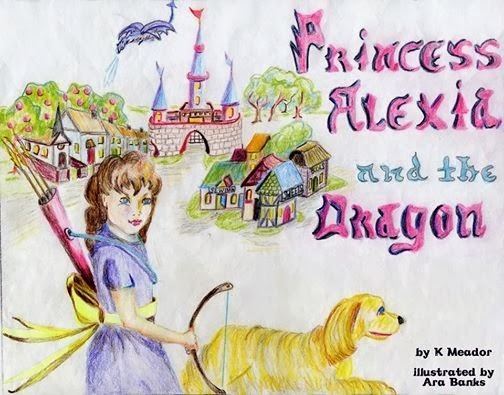
Author K. Meador says:
Princess Alexia and the Dragon is a family story conveying the special relationships grandparents have with their grandchildren. In this case, this story is about a grandfather who tells a story to his granddaughter after learning she wasn't sharing with other kids in school.
But that doesn't mean this story is no fun! It has a King, Queen, and their rambunctious Princess, Alexia in it. Of course, you cannot forget Zoey, the Princesses loyal pup and Titus, the fire-breathing dragon enemy.
Princess Alexia and Zoey decide to go find the dragons who have ruined the Ample Apple Orchard Celebration for years now. Expecting to find a mean dragon, she was highly surprised to meet a dragon who wore a pirates costume and talked like a pirate. Soon, they become friends and she learns why Titus has been burning down their Ample Apple Orchid.
She is going to make things right until both she and Titus is snared in steel traps and escaping looks grim.
Come and join Princess Alexia and the Dragon as they learn about sharing and friendship. Available now on Amazon Kindle. Available soon on auido and in paperback.
Amazon US
http://www.amazon.com/Princess-Alexia-Dragon-K-Meador-ebook/dp/B00ISGD866/ref=la_B0081NNBCC_1_1?s=books&ie=UTF8&qid=1394022848&sr=1-1
Amazon UK
http://www.amazon.co.uk/Princess-Alexia-Dragon-K-Meador-ebook/dp/B00ISGD866/ref=sr_1_1?ie=UTF8&qid=1394026032&sr=8-1&keywords=Princess+Alexia+and+the+dragon
Published on March 05, 2014 05:27
History Trivia - German barbarian leader Odovacar executed
March 5
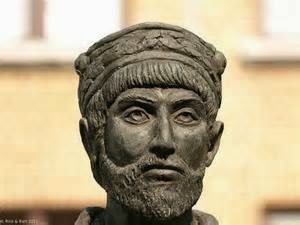
363 Roman Emperor Julian attacked the Sassanid (Persian) Empire with an army of 90,000in a campaign which would bring about his own death.
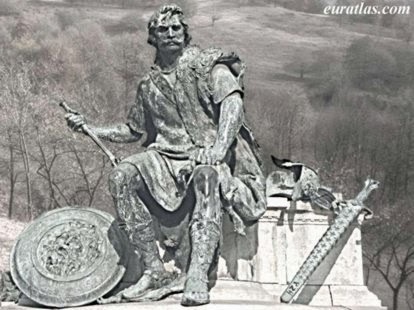
493 the German barbarian leader Odovacar (Odocacer), who had ended the Western Roman Empire in 476, was executed at age 59 by the Ostrogoths.
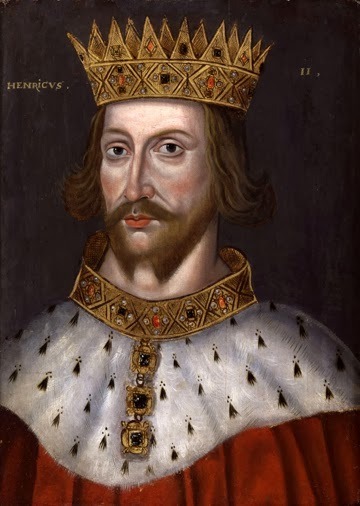
1133 King Henry II of England was born.
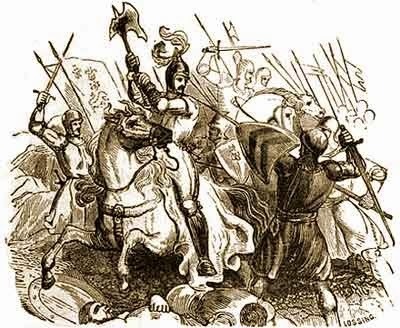
1461 Henry VI was deposed by Duke of York during the War of the Roses.

363 Roman Emperor Julian attacked the Sassanid (Persian) Empire with an army of 90,000in a campaign which would bring about his own death.

493 the German barbarian leader Odovacar (Odocacer), who had ended the Western Roman Empire in 476, was executed at age 59 by the Ostrogoths.

1133 King Henry II of England was born.

1461 Henry VI was deposed by Duke of York during the War of the Roses.
Published on March 05, 2014 04:49
The Phil Naessens Show: Three Reasons Why Johnny Manziel will be a Houston Texan
http://phillipnaessens.wordpress.com/2014/03/04/the-phil-naessens-show-three-reasons-why-johnny-manziel-will-be-a-houston-texan/
 On this edition of the Phil Naessens Show Michael Erler joins Phil to discuss all the possible rotations the San Antonio Spurs employ for any situation. Joe Mullinax stops by to discuss the NFL Draft combine and the guys take a closer look at the top QB’s. Zeb Benbrook joins Phil to update us on the Golden State Warriors and the guys take a closer look at the Warriors week ahead plus much more NBA and NFL talk.
On this edition of the Phil Naessens Show Michael Erler joins Phil to discuss all the possible rotations the San Antonio Spurs employ for any situation. Joe Mullinax stops by to discuss the NFL Draft combine and the guys take a closer look at the top QB’s. Zeb Benbrook joins Phil to update us on the Golden State Warriors and the guys take a closer look at the Warriors week ahead plus much more NBA and NFL talk.
 On this edition of the Phil Naessens Show Michael Erler joins Phil to discuss all the possible rotations the San Antonio Spurs employ for any situation. Joe Mullinax stops by to discuss the NFL Draft combine and the guys take a closer look at the top QB’s. Zeb Benbrook joins Phil to update us on the Golden State Warriors and the guys take a closer look at the Warriors week ahead plus much more NBA and NFL talk.
On this edition of the Phil Naessens Show Michael Erler joins Phil to discuss all the possible rotations the San Antonio Spurs employ for any situation. Joe Mullinax stops by to discuss the NFL Draft combine and the guys take a closer look at the top QB’s. Zeb Benbrook joins Phil to update us on the Golden State Warriors and the guys take a closer look at the Warriors week ahead plus much more NBA and NFL talk.
Published on March 05, 2014 04:49
March 4, 2014
The Wizard's Cauldron: Indie Scribe Magazine Editor TS Gwilliam - around ...
The Wizard's Cauldron: Indie Scribe Magazine Editor TS Gwilliam - around ...: Hiking to the South Pole in flip flops and a hula shirt is probably easier than trying to make it in Indie, but there are advantages and bo...
Published on March 04, 2014 18:53
Mr. Chuckles pops by the Wizard's Cauldron, checking out Indie Scribe Magazine and author TS. Gwilliam
 The Wizard says:
The Wizard says:Hiking to the South Pole in flip flops and a hula shirt is probably easier than trying to make it in Indie, but there are advantages and bonuses. One is when your posse - in this case, author -K-Trina Meador, a big mate of mine on The Wizard's Court - discovers something great, something exciting. Vis a vis Indie Scribe Magazine, created and edited by Manchester's Teresa (TS) Gwilliam. Featuring an Indie novelist and a poet each month, Indie Scribe Magazine had a circulation of two thousand last month, which is not bad in an age where munchie-afflicted gnats have deeper concentration spans than people.
Also a writer and poet, I picked up the Wizphone and caught Teresa experimenting with her version of Lancashire's finest export, Hot Pot. Here's what she had to say about the world of writing and magazines.... Click on the link to read more http://greenwizard62.blogspot.com/2014/03/indie-scribe-magazine-editor-ts.html
Published on March 04, 2014 18:39



